Gold, jaguars and a rainforest in peril: Trekking Costa Rica's wildest trails
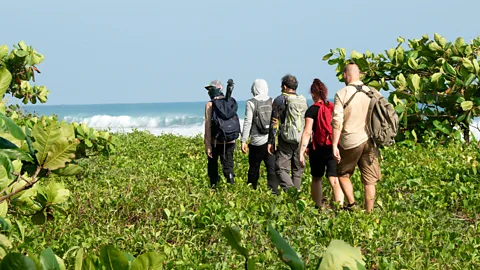 Oliver Berry
Oliver BerryOnce ravaged by mining and logging, Costa Rica's Corcovado National Park now shelters 2.5% of Earth's biodiversity. But as tourism grows, its future hangs in the balance.
"I was stalked by a puma once when I was a park ranger," says Danny Herrera-Badilla, as we trek down a trail in the tangled jungles of Costa Rica's Corcovado National Park. Sunlight filters through the canopy. Overhead I can hear the chatter of tanagers, the clack-clack of toucans and the distant boom of a motmot. Off to my left, the Pacific Ocean flashes through the trees, and a stripy-tailed coati bustles busily through the undergrowth.
"Actually, it's not the cats you have to worry about," Herrera-Badilla adds, as we emerge beside an estuary. "The white-lipped peccaries are really dangerous. And the snakes. We have a lot of venomous snakes. And scorpions. Some spiders. Oh yes, and crocodiles."
He points across the river. A portly saltwater crocodile is basking on the far bank; its jaws fixed in a reptilian grin. "He's waiting for his breakfast," Herrera-Badilla says. "Which reminds me. I'm hungry." We sit down on a log and tuck into our packed snack of tacos and plantains, listening to scarlet macaws squabbling in the treetops. Apart from us, there isn't a soul around.
I've only been in Corcovado for two days, but that's long enough to understand what a wild place this is. Covering 424 sq km of the Osa Peninsula, a remote pocket of land in Costa Rica's far south-west, the park contains the largest area of primary tropical rainforest in Pacific Central America. Sandwiched between the Pacific Ocean to the west and the deep Golfo Dulce to the east, it's a vast wildlife refuge; more like an island than a peninsula. Some 500 tree species, 400 birds, 116 reptiles, 6,000 insects and 140 mammals are found here, as well as the endangered Baird's tapir and harpy eagle. It's estimated that Corcovado contains 2.5% of the world's biodiversity – an extraordinary statistic for somewhere smaller than the Isle of Man.
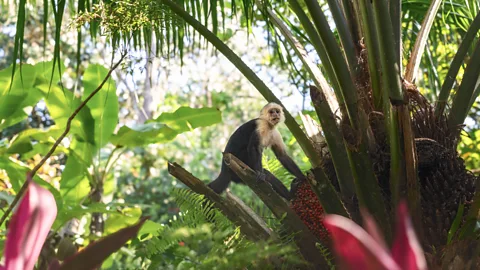 Getty Images
Getty ImagesFounded in 1975, Corcovado celebrates its 50th anniversary in 2025, so I've travelled south from the capital of San José to find out what's worked over the last half-century – and to ponder what the next 50 years might hold in a world in which wild places like Corcovado are under threat. Primary forests are a rare and dwindling resource: according to the United Nations, they have reduced globally by 800,000 sq km since 1990.
The flight from San Jose takes just under two hours, our twin-engine plane gliding low over jungled hills, white beaches and blue bays before bumping down on the dusty airstrip in Puerto Jiménez, a beach town about 40km from Corcovado's eastern edge.
Set Out
Set Out is a BBC Travel series that celebrates slow, self-propelled travel and invites readers to get outside and reconnect with the world in a safe and sustainable way.
The creation of the national park was a watershed moment for the Osa Peninsula. In the previous decades, this was Costa Rica's wild west frontier. Illegal logging and poaching was widespread; tracts of forest had been lost to slash-and-burn agriculture and clandestine gold mining along the rivers was commonplace. The national park ended these damaging practices and allowed areas of deforested land to regenerate. Between 1987 and 2017, Osa's forest cover actually increased by 11%, in contrast to many other rainforests across Central and South America.
The national park also brought something else with it: ecotourism. Corcovado is now Costa Rica's 10th most visited national park, receiving approximately 50,000 visitors a year – but it feels quiet compared to more popular parks such as Manuel Antonio, Irazú and Arenal.
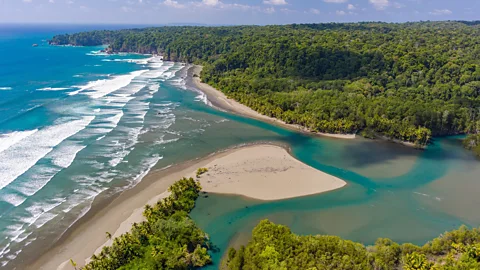 Alamy
AlamyThat's because park access is strictly controlled. There are only three publicly accessible trails, and anyone entering must do so in the company of a licensed guide. The most popular route runs to the ranger station at La Sirena, where it's possible to bunk overnight for some spectacular early-morning wildlife watching. The other two routes are less frequented: one travels along the jungly south coast from La Leona Ranger Station; while the other, a challenging cross-country route that involves bushwhacking and river crossings, runs in from the north at Los Patos Ranger Station. SINAC, the governmental body that oversees Costa Rica's national parks, employs a small team of rangers to patrol the hiking trails and ensure rules are being followed.
These strict regulations have ensured that Corcovado has stayed startlingly wild. Most of the park is completely off-limits, although a few scientists are allowed access to conduct field studies and monitor wildlife. This means that, over the last half-century, Corcovado has remained that rarest of things: a predominantly human-free habitat.
The question for the next 50 years is whether it can stay that way. Until recently, there was a cap of 120 people per day on the Sirena trail, but that has now been doubled to 240 – a controversial change that has caused concern for many locals.
"No-one was consulted," says Ifigenia Garita Canet, a biologist who has offered walking tours into Corcovado through her company, Osa Wild, since 2012. "There was no impact study. That's really worrying. In a place like Corcovado, you must make every decision with great care."
She fears it is part of a growing trend that emphasises quick profits and growing visitor numbers rather than the small-scale, low-impact tourism model which she – and others – have worked so hard to develop on the Osa Peninsula.
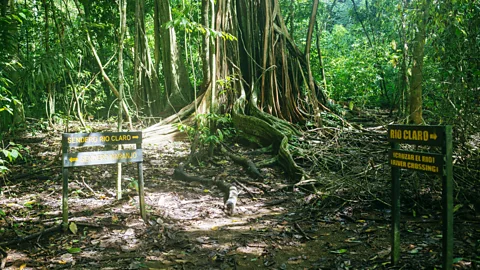 Getty Images
Getty ImagesThere are other reasons to be worried. A project to build a paved road around Osa's coastline is underway. The first multi-national hotel, Botanika (owned by Hilton) has recently opened. And there is talk of a new international airport in Puerto Jiménez, a prospect that fills Canet with dread.
"As a passionate human trying to preserve this place, it's tragic to hear such a thing being talked about," she says. "In Costa Rica, we are masters in greenwashing sometimes. We shout statistics about biodiversity, all the land we have protected. But to build something like that here? That would go against everything we stand for."
It's a reminder of the delicate balance in a place such as the Osa Peninsula. While tourism and development bring economic benefits, inevitably they come at a cost. During the pandemic, tourism-based jobs all but vanished, causing economic hardship and a sudden, unwelcome return to illicit industries like logging and gold-panning.
"Much of our work is around developing education and employment for local people," says Helena Pita, who works for Fundación Corcovado, which supports sustainable development and ecosystem restoration around the Osa Peninsula. "We all know how important this place is, but it's important we don't become too reliant on tourism. The question is, can we find ways to promote conservation while also helping local people improve their lives?"
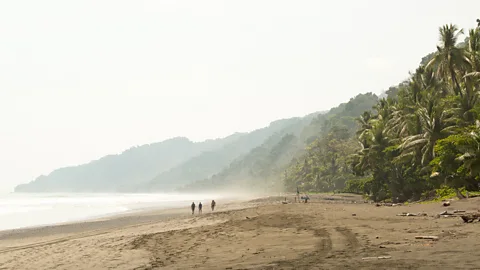 Oliver Berry
Oliver BerryPita and her colleagues believe the answer starts with local action. Since 2001, Fundación Corcovado has raised funds for more than 100 local projects, from building ranger stations and overseeing habitat restoration to supporting community tourism, sustainable agriculture and environmental education programmes in schools. They've also run a sea turtle protection scheme that's estimated to have saved more than 10,000 turtle nests and 640,000 hatchlings.
"There are lots of organisations doing good work," Pita says. "But to see the changes we want, and fight the things we don't, we must get organised."
The stakes are high in a place as precious as Corcovado. But this is clear evidence that conservation efforts are working – not just within the park but beyond it too. According to field data, many species, including rare animals like tapirs, jaguars and white-lipped peccaries are now venturing beyond park boundaries into adjacent areas such as the Golfo Dulce Forest Reserve and Piedras Blancas National Park. For groups like Osa Conservation, which manages more than 8,000 acres of surrounding land, the dream is a connected corridor stretching from the Osa Peninsula to the Talamanca Mountains – a vast, climate-resilient ecosystem where biodiversity can thrive.
On my final day on the Osa Peninsula, I take a last hike into the rainforest in the company of Danillo Alvares, another ex-ranger and wildlife guide. With his khaki fatigues and grizzled grey beard, he channels Indiana Jones; and with a lifetime's worth of experience exploring Corcovado, his knowledge of – and passion for – the forest is inspiring.
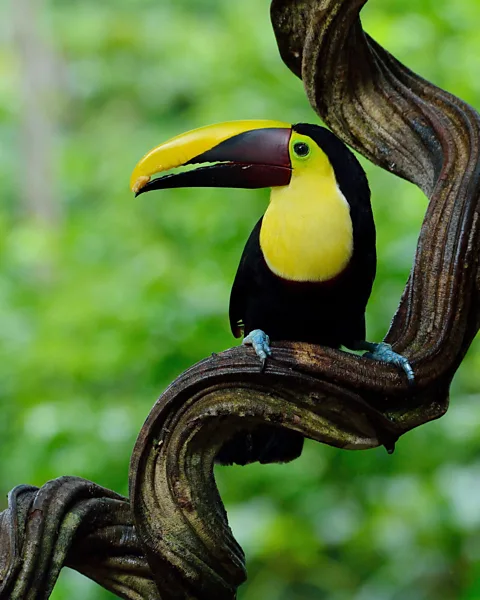 Alamy
AlamyWe hike along the trail, picking our way over the Brobdingnagian roots of strangler figs and phalanxes of leafcutter ants marching across the path. Overhead, spider monkeys skitter through the treetops, chattering noisily to warn each other of our approach. Alvares finds golden orb spiders strung through the trees, a strawberry poison dart frog hidden in a hollow, an eyelash pit viper lurking ominously in the folds of a leaf. He tells me about the healing properties of the dragon blood tree, whose scarlet sap acts as an antiseptic and anti-fungal; and the milk tree, which secretes a latex-like substance that was once used to make bouncy balls and seal canoes. We listen to the buzz of cicadas and the whoops of howler monkeys down the valley, resting beside a clattering waterfall where clouds of giant blue morpho butterflies drift past.
In the primary rainforest, Alvares explains, each tree species occupies a niche, supporting its own unique mini-ecosystem. That's why it's vital to leave the old-growth trees where they are, he says: every one that's felled breaks a strand in the fragile web of life that has evolved here over tens of thousands of years.
We end our walk under a huge ceiba tree, perhaps 30m high and 2m across. A tree like this is probably two or three centuries old, Danillo says, but there are some trees deep inside Corcovado which are much, much older – trees that would probably have been standing long before the conquistadors arrived in Central America.
"There is nowhere else like Corcovado on planet Earth," he says, raising his head to look up into the canopy. "And it is our responsibility to protect it."
--
If you liked this story, sign up for The Essential List newsletter – a handpicked selection of features, videos and can't-miss news, delivered to your inbox twice a week.
